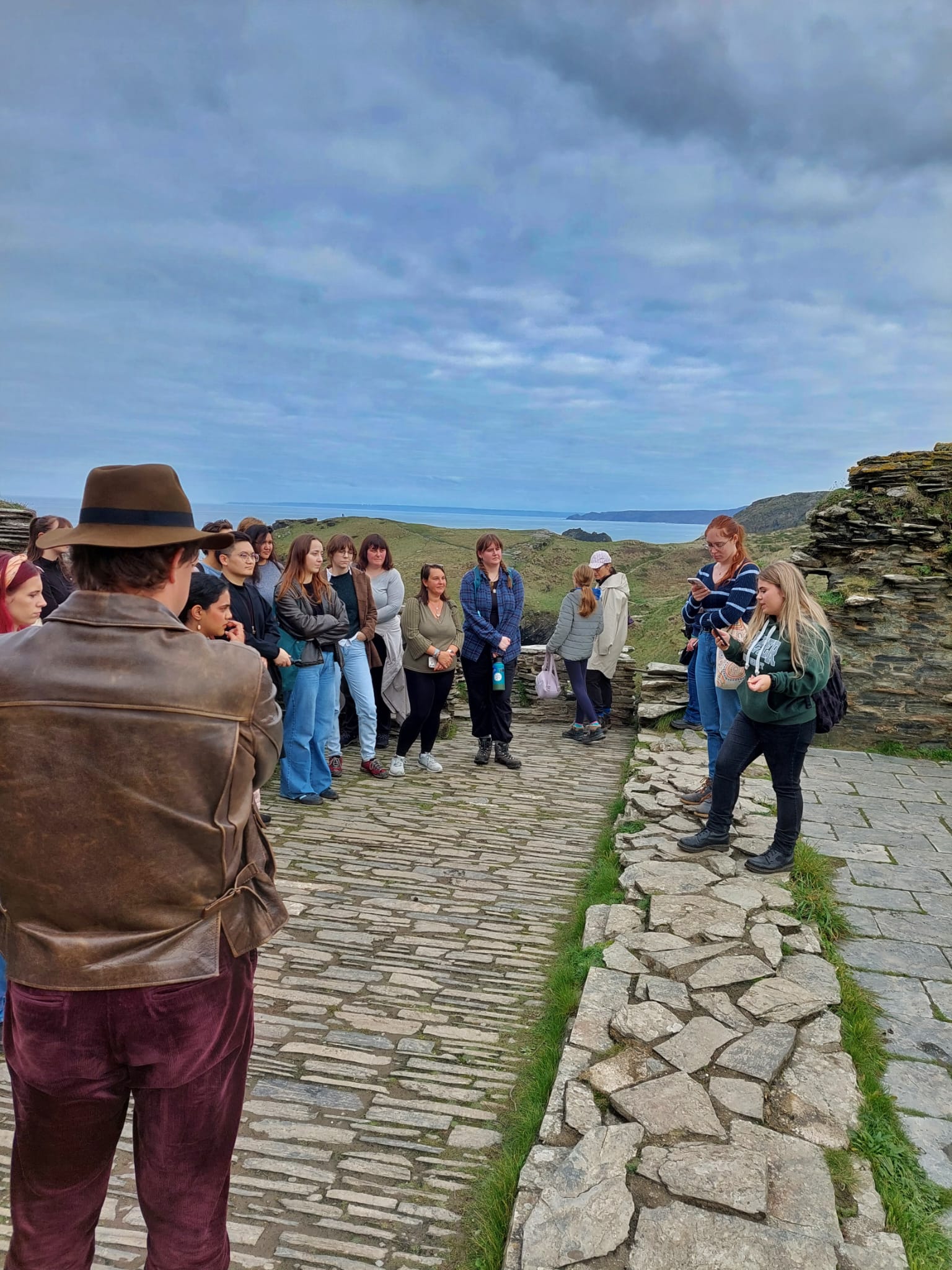
Posted by Jennifer Farrell
25 November 2024‘The Legend of King Arthur‘ (HAS3006 / HASM006) is an exciting new module here at Exeter. Running across third-year undergraduate and Master’s level, it brings together specialists from across the Centre for Medieval Studies into a single module, during which we explore the ‘once and future King’ as he has been presented from the Middle Ages to the present day. A key part of the module is our field trip to Tintagel, which took place in week 6 of term. In this week’s blog post, Dr. Jennifer Farrell, the module convenor, looks back on a busy but rewarding day.
Earlier this term, myself, Dr. Gregory Lippiatt, Dr. Naomi Howell, and Prof. Joanne Parker took our Legend of King Arthur students on a very enjoyable trip to the beautiful and historic village of Tintagel, on Cornwall’s north coast. Over the course of the day we explored the site’s many connections to the Arthurian legends, from the conception of Arthur to the ill-fated romance of Tristan and Iseult.
We started the day by racing down the hill, clambering over boulders and smaller rocks, to explore the otherworldly environment of Merlin’s Cave, desperate to see it before the tide came in to hide it all from view. While there, we heard from students about the cave’s history, its appeal to Alfred, Lord Tennyson (d. 1892), who provided it with a pivotal role in the story of Arthur, and how the principles of feng shui and the idea of energy forces can help us to appreciate the mystical qualities of the space. Before departing the beach, we all made sure to pay our respects to Merlin who was keeping a beady eye on us!
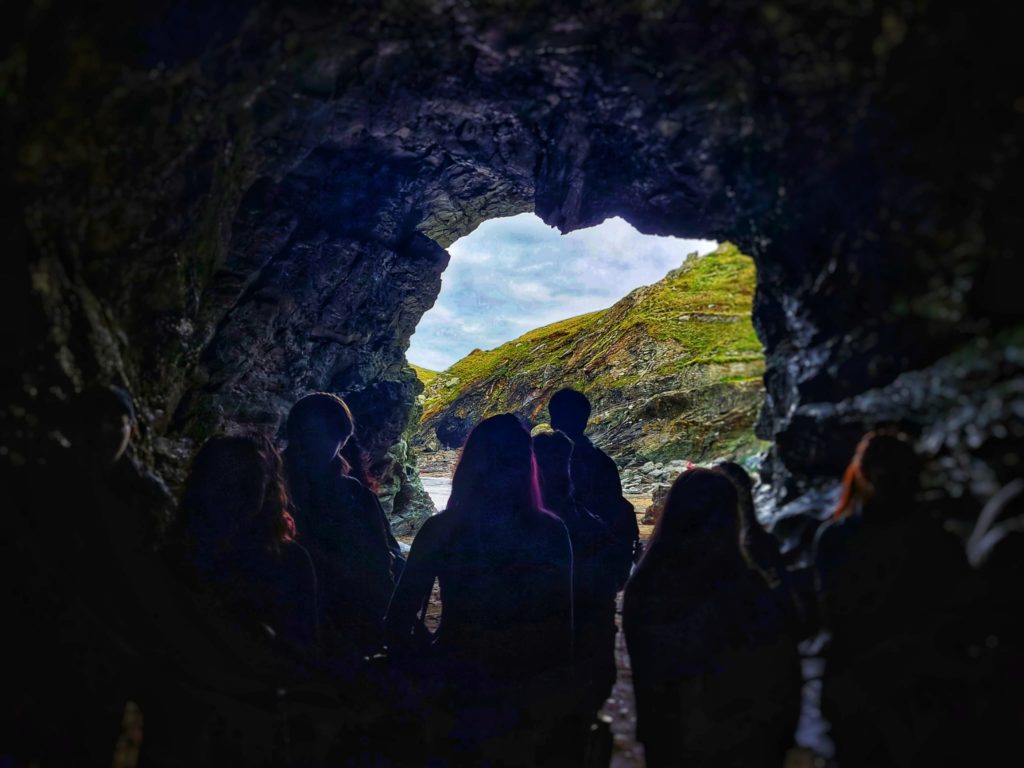
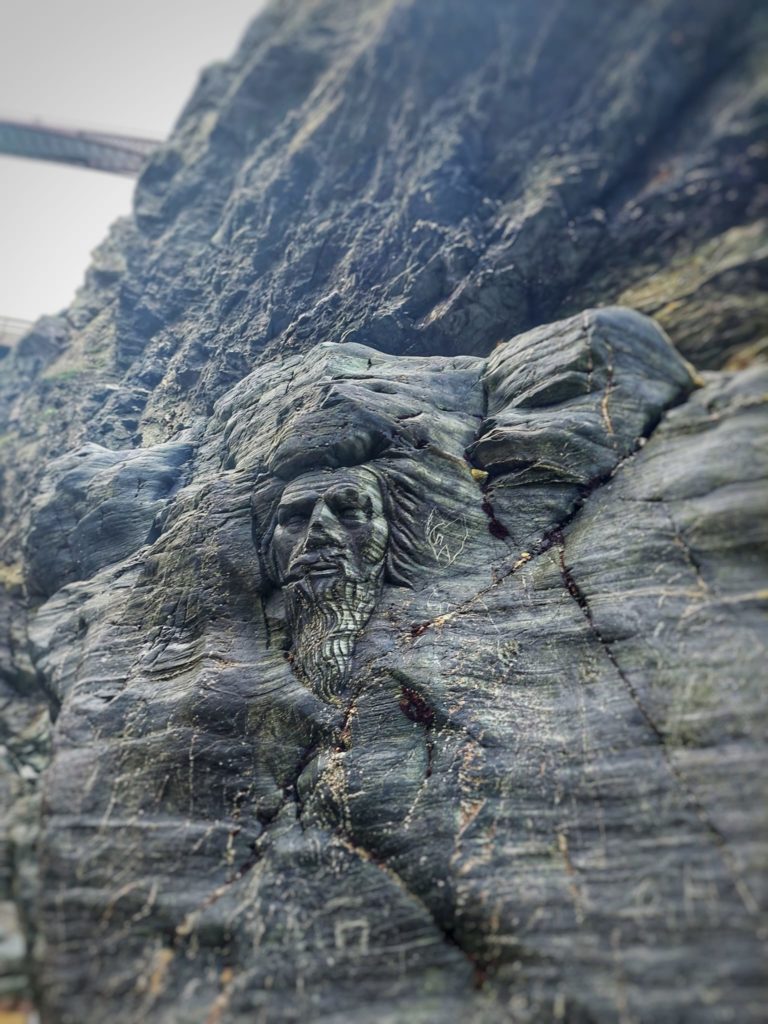
Next we visited the ruins of the thirteenth-century castle of Richard of Cornwall. While in the castle, students spoke about the story of Arthur’s conception, first documented in Geoffrey of Monmouth’s Historia regum Britanniae (c. 1138). The story goes that Uther, king of the Britons, had fallen in love with Igraine, the duchess of Cornwall. In order to gain access to her, Uther convinced Merlin to use his powers to transform him into the likeness of Igraine’s husband, Gorlois. The result of this sinister act of trickery was the conception of Arthur by Igraine and Uther.
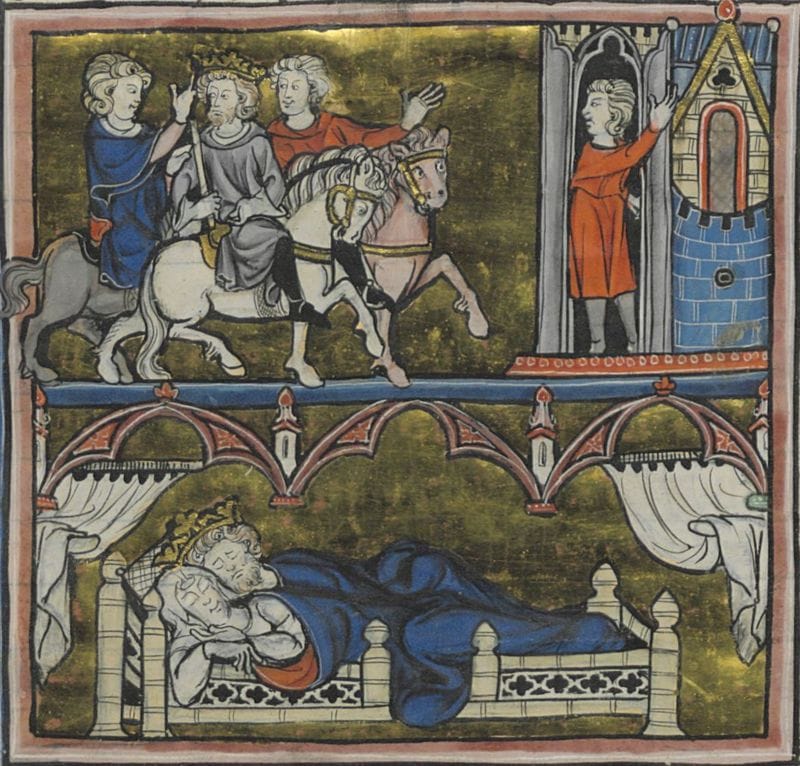
Nearly one hundred years later, thanks to the story first told by Geoffrey of Monmouth, the legend of Arthur had been firmly linked with Tintagel, and it was this association that likely prompted Earl Richard to build his castle here.
Moving from the outer and inner wards of the castle through to the far side of the “island” (really a peninsula), we encountered the ruins of buildings that once stood on the site from around the fifth to the seventh centuries AD. Here, students spoke about the history of “dark age” Tintagel, about its important role as a centre of trade, and the development of a religious community on this remote part of the Cornish coast.
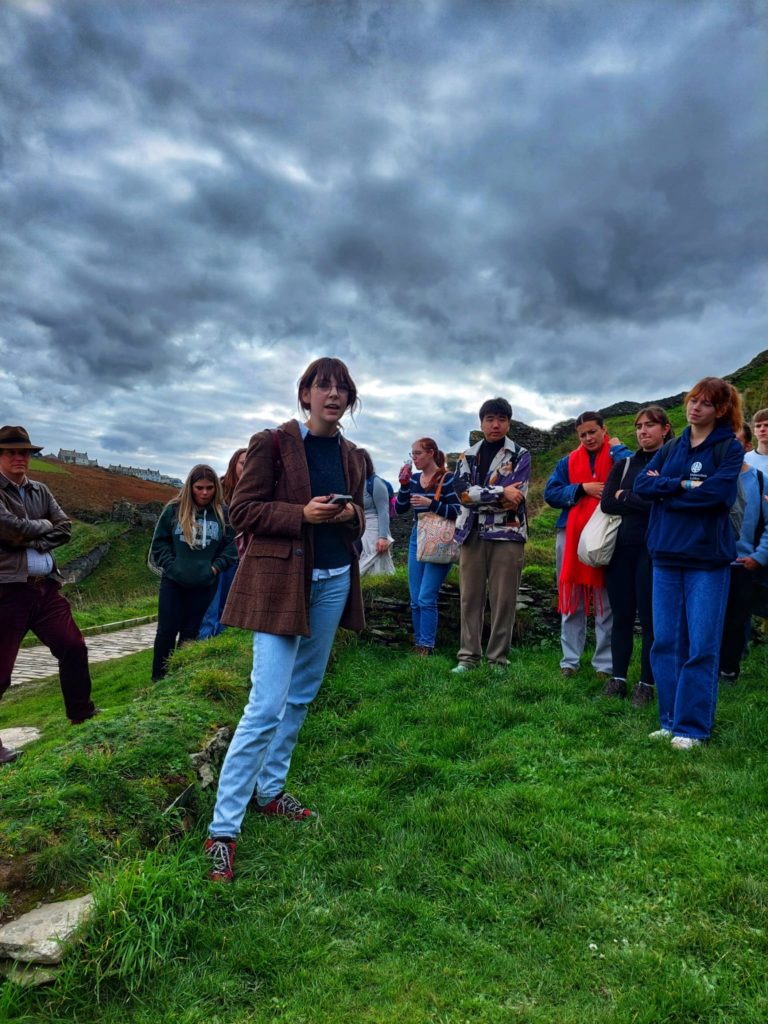
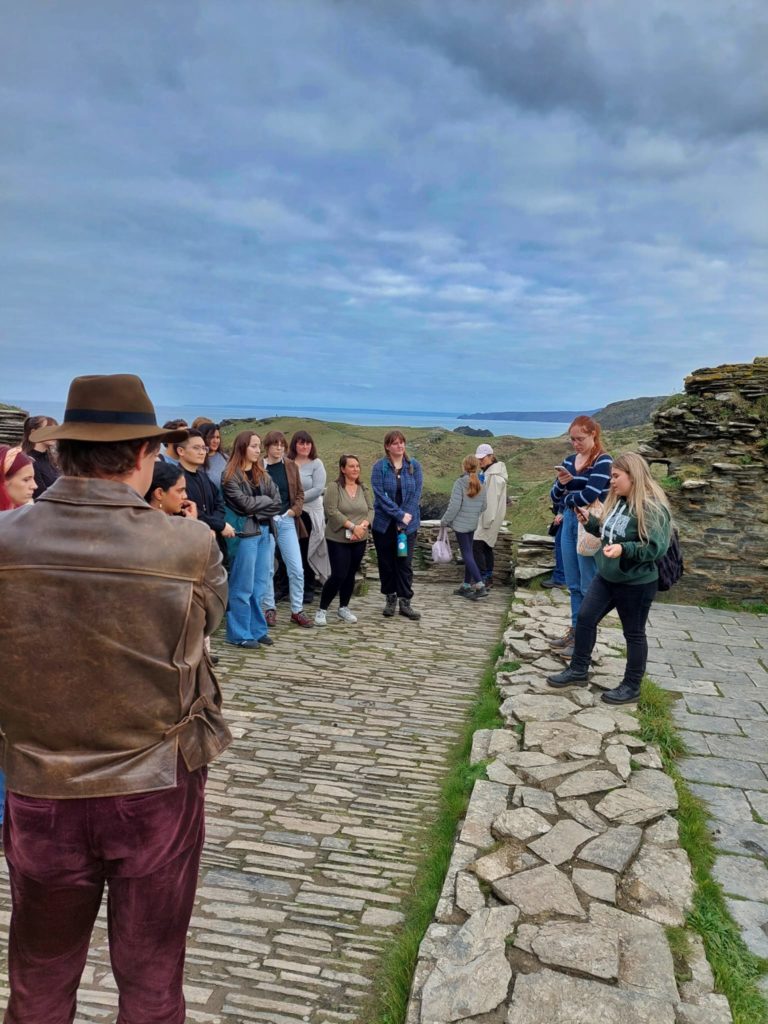
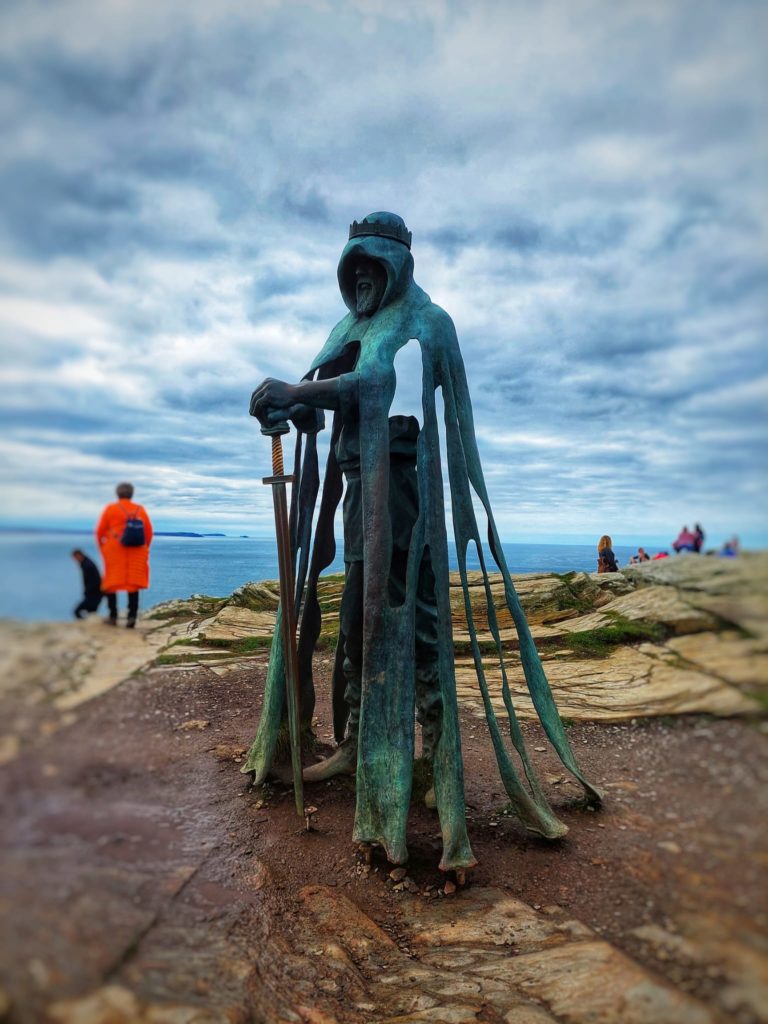
We then walked around the island to see the imposing Gallos. As students pointed out, the sculpture is deliberately not named ‘Arthur’ so that it might also evoke thoughts of other rulers associated with the south west. For most, the statue will always be Arthur, but it was actually modelled on a man named Dave Allen who worked at Tintagel. Quite the imposing figure, it seems …
From there, we strolled on over to the walled garden of Tristan and Iseult. Likely a part of some sort of early Christian community on the island, the garden nonetheless thrives on its associations with these two ill-fated lovers. Standing in the garden, we heard about their story from students and of its strong connections with Tintagel as the royal seat of Iseult’s husband, King Mark. We even attracted the attention of some much younger visitors, as two small children decided to sit and listen to what our students were saying (and another generation of Arthurian enthusiasts is born!).
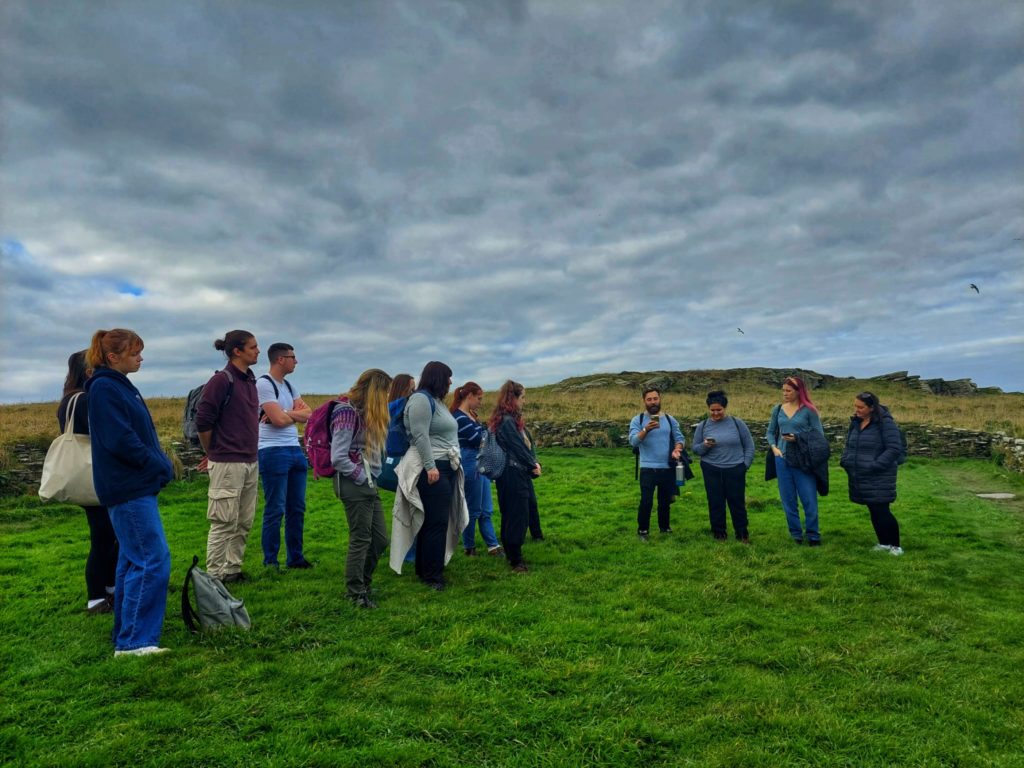
We also spent some time chatting about the relationship between Cornwall and the legends of Arthur and his knights, and about the heritage aspects of those legends today. Our visit to the castle was concluded with a poem, read by Tiffani Montgomery, which explored the role played in the Arthurian legends by the rugged landscapes of the natural world.
With the trip to the cave and the castle concluded, we enjoyed nearly two hours of strolling around the heritage centre and sampling the food and beverage options of Tintagel village (excellent ice-cream!). A sword may also have been purchased …

In the afternoon, we all ventured up to King Arthur’s Halls, where we were treated to a retelling of the Arthurian legend as found in Thomas Malory’s Le Morte d’Arthur (1485). Guided by the voice of Merlin, we were taken through the story via a number of really interesting paintings and a rather surprising light show (during which it was strongly implied, by a light beaming down from above, that one of our students is in fact that prophesied child Merlin spoke of all those centuries ago. I’m just saying… ).
In the Great Hall students spoke about the importance of the symbolism of stories about Arthur’s knights and their round table, as well as the sword in the stone. We also heard about the important role art has played in conveying the legends of Arthur to new and larger audiences.
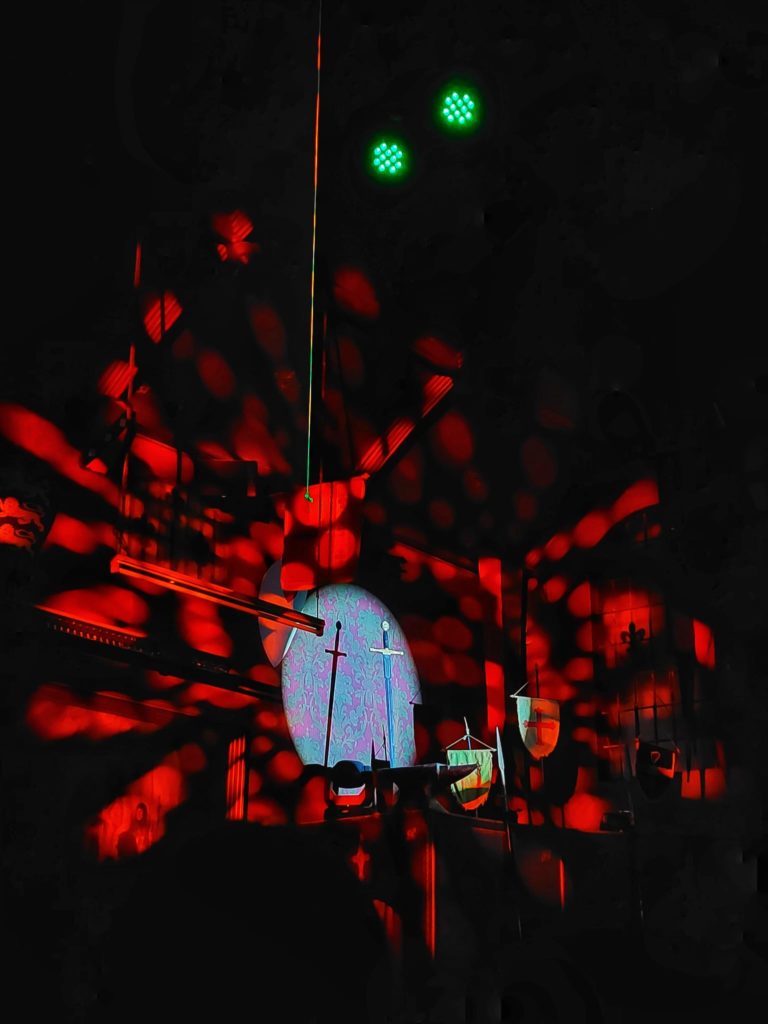
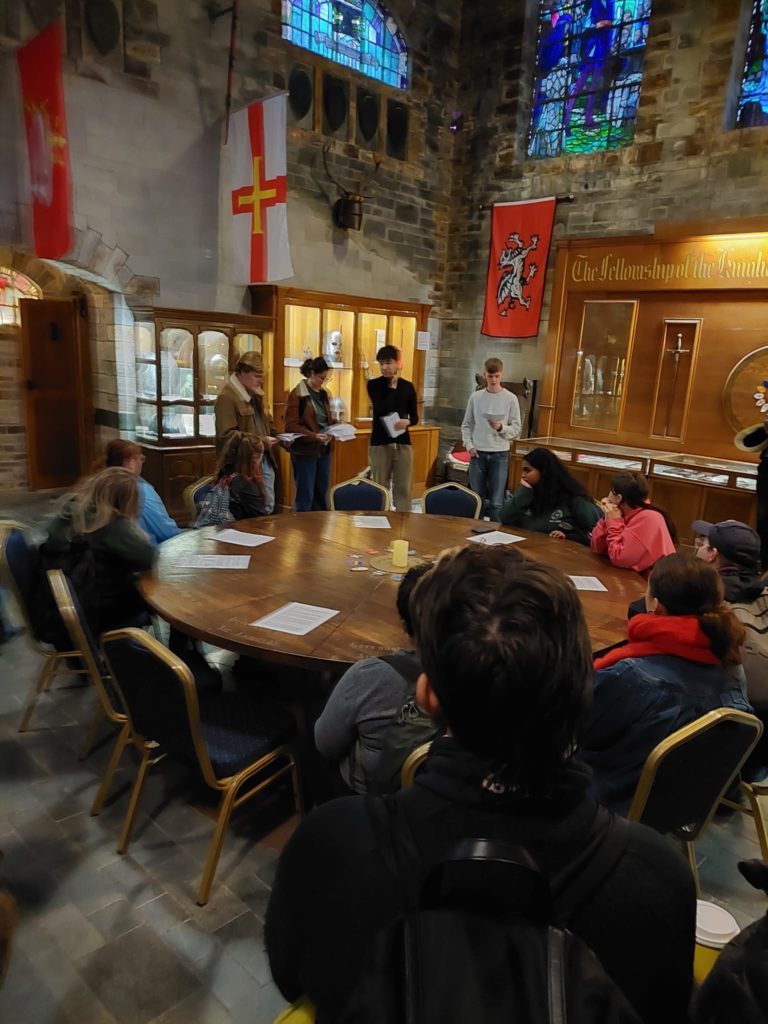
And then, it was time to return to Exeter.
Field trips like these are such an important way of bringing to life the different histories that we study in class. As lecturers, researchers, and students of the Arthurian legends, having the opportunity to actually get out and visit a place like Tintagel offers us the chance to better understand the relationship between place and history, and to better appreciate the different ways in which heritage can engage us with the past.
Having students deliver presentations on various aspects of the Arthurian legends and their connection to Tintagel meant that the trip was very much a learner-centred endeavour. We learned so much from one another during these presentations and, as each of our students demonstrated, there is so much to explore when it comes to these legends and their wider cultural and historical significance. And what better place is there for peer learning than out on the sites where history and legend converge?
We are fortunate here at the University of Exeter to be in such a great location for getting out and experiencing many of the sites connected with the Arthurian past and with the wider medieval history of the south-west. All in all, a very enjoyable and successful day! Now to start planning another one for next year …